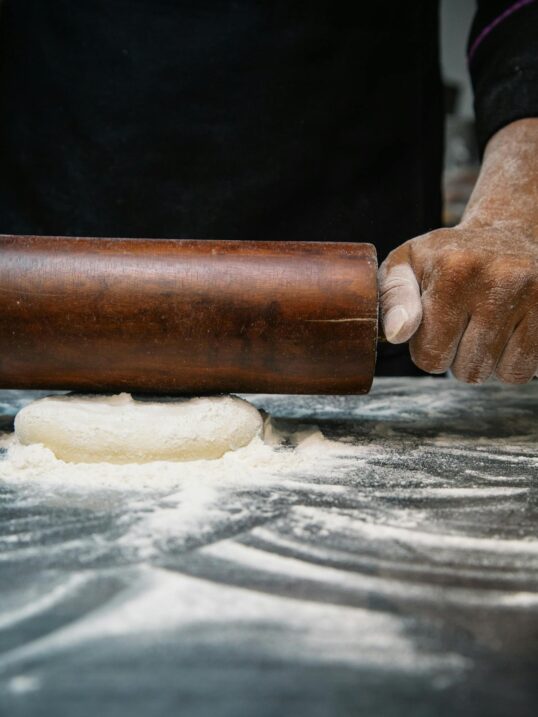Block-style cream cheese is an ingredient most home-bakers have on their refrigerator shelves.
If you dig deeper, you might even find a couple of blocks safely stashed in the freezer. For those of us who consider bagel smeared with cream cheese a go-to breakfast on busy weekdays, a tub of its spreadable version turns out a lifesaver.
Either way, cream cheese is a popular grocery item that comes in many variants – full-fat, low-fat, flavored (honey-pecan, chive & onion, anyone?), or even plant-based. However, its texture and composition make it a perishable product that must be stored and used properly.
Read on to find out all you need to know about properly storing cream cheese and how to tell if cream cheese has gone bad.
How Long Does Cream Cheese Last?
Under ideal conditions, unopened cream cheese lasts up to four weeks past the date of expiry printed on the pack.
Some users of Philadelphia cream cheese claim this product stores well for several months past expiry, although this is not recommended from a health and safety perspective.
Once opened, however, cream cheese must be consumed within 10-14 days, as exposure to air and humidity speeds up the process of spoilage.
Whether opened or sealed, it is essential to refrigerate cream cheese at all times at a temperature of 40°F or under.
Expiration vs sell-by date
If you look carefully at a tub or box of cream cheese, you will find its expiration and sell-by dates printed on the packaging. What do these dates mean?
As the name suggests, an expiration date or date of expiry is the date by which you must use a product to ensure safe consumption, top quality, and flavor. As a rule, grocers and supermarket owners aren’t permitted to stock expired products on their shelves. This is also why shop owners offer generous discounts on products close to expiry.
Does this mean you must discard cream cheese that is past the expiration date? Not necessarily.
If you have stored cream cheese properly and the product seal is intact, you can safely use it within four weeks after its expiry. If you keep it any longer, the product might still be safe to eat but will deteriorate in quality.
For instance, you might find a pooling of liquid or an overall gritty texture on opening the pack.
On the other hand, a sell-by date is a reference for shop owners and indicates the preferable date before which a product must be sold to customers.
Sell-by dates are more or less influenced by product production dates and are more indicative of prime product quality than food safety.
For the same reason, sell-by dates are almost always ahead of expiration dates.
How to Tell if Cream Cheese is Bad
In some cases, you might not be able to recall the date of expiry of a block of cream cheese because you threw away the outer packaging, or maybe, you stored the leftover product in a separate container and forgot to mark the date when it was opened.
In such situations, you must rely on your senses to gauge if the product is safe to eat. Thankfully, the signs of spoilage of cream cheese are fairly easy to spot.
Color changes
Cream cheese is naturally white or slightly off-white and creamy in appearance. Any yellowing on the surface indicates the product has begun to spoil and is best discarded.
Opened cream cheese is also prone to mold growth in the form of fuzzy grey or green patches. You might think it is okay to just scoop out the moldy area and continue using the rest of the product.
While this is okay for hard cheeses (such as blocks of mature cheddar or parmesan), cream cheese falls in the category of ‘soft cheeses’, where mold roots can penetrate deep and disperse spores through the product. You should immediately throw away any product that shows mold growth.
Taste
Cream cheese is characterized by a tangy taste, but if it tastes sour, it is most likely spoiled and not fit for consumption.
A taste test should be used as a final measure only if the cream cheese checks out okay in appearance and smell, but you still want to make sure.
Smell
Spoiled cream cheese produces a pungent, sour, or moldy odor that just doesn’t smell right.
Texture
Texture is another useful indicator of cream cheese that’s on its way to becoming spoiled. Good-quality cream cheese has a smooth and creamy texture whereas, a spoiled or poor-quality product will be crumbly or have pools of liquid on top. It could also have dry spots or a layer of slime. Such packs must be discarded.
Health Risks of Eating Bad Cream Cheese
Let’s be honest; the chances of us directly consuming an entire serving of spoiled cream cheese are close to none.
However, if we do not pay close attention, we could inadvertently use bad cream cheese in cooking or make sandwiches for kids who do not really know the difference between good cream cheese and bad.
While ingesting spoiled cream cheese is not deadly, it could cause a severe bout of food poisoning, including diarrhea or, in some cases, allergies. In addition to these symptoms, if you experience fever or chills and suspect the cream cheese might be to blame, you should consult a doctor immediately.
How to Prevent Cream Cheese from Spoiling
Supermarkets keep cream cheese refrigerated at all times; this is how you should store yours, too. However, for uses such as baking, it becomes necessary to bring the cream cheese to room temperature.
So, how long can you let the block sit out before it becomes susceptible to spoilage? At the most, between 1-2 hours.
Here’s a helpful tip for bakers: Measure an approximate amount of cream cheese from the block right after you take it out of the fridge and pop the rest back inside after sealing the package properly.
Once the measured portion comes up to room temperature, you can scoop out the exact quantity and store any leftovers in a separate container before placing it in the fridge.
Packaging is another important factor that affects shelf life. After it is opened, foil-wrapped cream cheese must be re-wrapped with the same foil and an additional layer of cling film and secured with a rubber band to minimize its exposure to air.
Alternatively, you could place the leftover product in an airtight container or resealable pouch. This isn’t necessary for spreadable cream cheese in tubs or jars, since the seal is already quite airtight.
We cannot over-emphasize the importance of using clean cutlery when handling cream cheese. Use a clean, dry knife or spoon to slice and scoop out cream cheese, and avoid double-dipping the same cutlery.
This reduces the chances of external elements, such as moisture or food crumbs, making their way into the packaging. Not only does it make for an unsightly appearance the next time you reach out for cream cheese, but it also contributes to mold formation.
Lastly, remember to store cream cheese on a top shelf towards the inside of your fridge, which is usually the coldest area. Avoid storing dairy products on the fridge door as it is warmer by comparison.
It is also okay to freeze cream cheese as long as you don’t mind a crumbly texture. We wouldn’t recommend this if you intend to whip up some cream cheese frosting, though.
Insider’s Insight
Cream cheese is a soft cheese that must be refrigerated at all times. A sealed container of cream cheese stored at 40°F or under will be safe to consume up to four weeks past its expiration date, maybe even longer. Once opened, you must try to finish it within 10-14 days for the best quality and flavor.
Spoiled cream cheese is easy to identify – yellowing, dry spots, excessive pooling of liquid, fuzzy grey or green mold, and a sour or pungent odor are common indicators. Consuming spoiled cream cheese could lead to digestive issues, or in extreme cases, food poisoning. Always remember to store cream cheese in airtight packaging and use clean cutlery during handling.




Leave a Reply